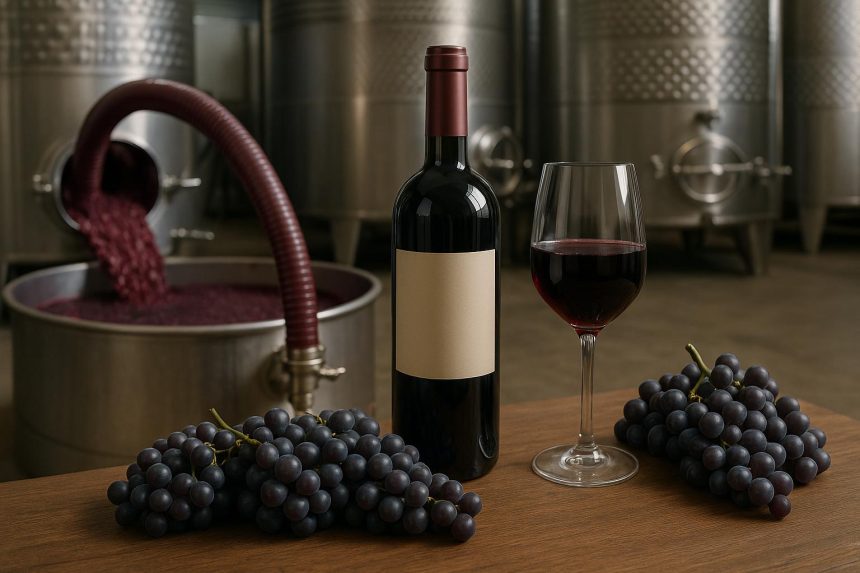When a winery starts small, there’s room for experimentation and learning curves. A few inconsistent bottles here and there might not make or break the business. But as a brand grows and distribution expands, those small production details suddenly become the difference between building a loyal customer base and watching your reputation crumble one disappointed buyer at a time.
The reality is that growth amplifies everything—both the good decisions and the overlooked ones.
The Consistency Challenge Nobody Warns You About
Producing 500 cases a year is a completely different game than producing 5,000. When production volume increases, maintaining the exact same flavor profile, color, and aging potential becomes exponentially harder. What worked in a small batch doesn’t always scale smoothly.
Here’s the thing: customers who fall in love with a wine expect it to taste the same next year. They’re not interested in hearing about production challenges or batch variations. They want the wine they remember, and anything less feels like a broken promise.
This is where production details start carrying real weight. The type of wine closures selected, the bottling line speed, the quality control checkpoints—these aren’t just technical specifications anymore. They’re the infrastructure that protects brand identity at scale.
Temperature control during bottling becomes critical. Oxygen exposure needs precise management. Even the timing between different production stages can affect the final product in ways that weren’t noticeable at smaller volumes.
Quality Control Gets More Complex (and More Important)
Small wineries can often spot-check quality through personal attention and experience. The winemaker might literally taste from every barrel and inspect every case. That personal touch works beautifully until it physically can’t anymore.
Growing brands need systematic quality control that doesn’t rely on one person being everywhere at once. This means establishing clear standards for every stage of production and actually enforcing them, even when deadlines get tight or costs start adding up.
The problem is that cutting corners becomes tempting when order volumes spike. Rush a bottling run to meet delivery deadlines, and suddenly there’s a batch with inconsistent fill levels or compromised seals. Skip a filtration step to save time, and sediment issues pop up months later when bottles are already on retail shelves.
Most people don’t realize how long it takes for production mistakes to become visible. A wine might look perfect leaving the winery but develop off-flavors or oxidation issues after six months in distribution. By then, the damage to brand reputation is already done.
Material Sourcing Becomes a Strategic Decision
At small production levels, buying supplies is straightforward. Order what’s needed, when it’s needed. But growth changes the equation entirely.
Larger wineries need reliable suppliers who can deliver consistent quality at volume. A cork supplier who was perfect for 300 cases might not have the capacity or quality systems to support 3,000 cases. Bottles, labels, capsules—every component needs vendors who understand that consistency matters just as much as price.
The relationships matter too. When production schedules get complicated or unexpected issues arise, having suppliers who prioritize your needs makes all the difference. The cheapest option rarely turns out to be the best option once the full picture becomes clear.
Smart wineries also think ahead about ingredient availability. Relying on a single source for critical materials is risky business. What happens when that supplier has quality problems or capacity constraints? Building backup relationships before they’re urgently needed is the kind of forward thinking that separates brands that scale smoothly from those that hit constant production crises.
The Equipment Upgrade Conversation
Hand-corking bottles works fine for tiny production runs. It stops working when volume grows. The same goes for manual labeling, small-batch filtering, and a dozen other tasks that feel manageable until suddenly they’re not.
Growth forces honest conversations about equipment investment. Bottling lines, filtration systems, temperature-controlled storage—these aren’t luxuries for serious production. They’re necessities for maintaining quality standards when personal oversight can’t cover everything anymore.
The timing of these investments matters enormously. Wait too long, and quality suffers while scrambling to keep up with demand. Invest too early, and capital gets tied up in equipment that sits idle. Finding that balance requires understanding not just current production needs but where the brand is headed over the next few years.
Documentation Starts Mattering
Small operations can rely on institutional knowledge and personal memory. The winemaker knows exactly what happened with each vintage because they were there for every decision. Growing brands can’t function that way.
Detailed production records become essential. What were the exact specs for last year’s bottling run? Which supplier provided the materials for the vintage that won awards? When problems arise—and they will—having clear documentation means finding answers quickly instead of guessing or recreating history from memory.
This documentation also protects the brand during transitions. When key team members leave or new people join, those records ensure knowledge doesn’t walk out the door. The wine continues being made the right way because the right way is clearly documented, not just understood by a few individuals.
Building for Tomorrow
The production details that matter most during growth are the ones that create sustainable systems. Not just getting this year’s vintage bottled, but establishing processes that will work for the next ten years.
That means thinking about scalability at every step. Will this bottling approach still work at double the volume? Can quality control systems adapt as production grows? Are supplier relationships strong enough to support future expansion?
Growing a wine brand successfully requires recognizing that production isn’t just about making wine anymore. It’s about building the infrastructure that protects quality, maintains consistency, and supports the brand’s reputation as it reaches more customers. The wineries that understand this early are the ones that scale smoothly while others struggle with growing pains that damage everything they’ve built.
Lynn Martelli is an editor at Readability. She received her MFA in Creative Writing from Antioch University and has worked as an editor for over 10 years. Lynn has edited a wide variety of books, including fiction, non-fiction, memoirs, and more. In her free time, Lynn enjoys reading, writing, and spending time with her family and friends.















